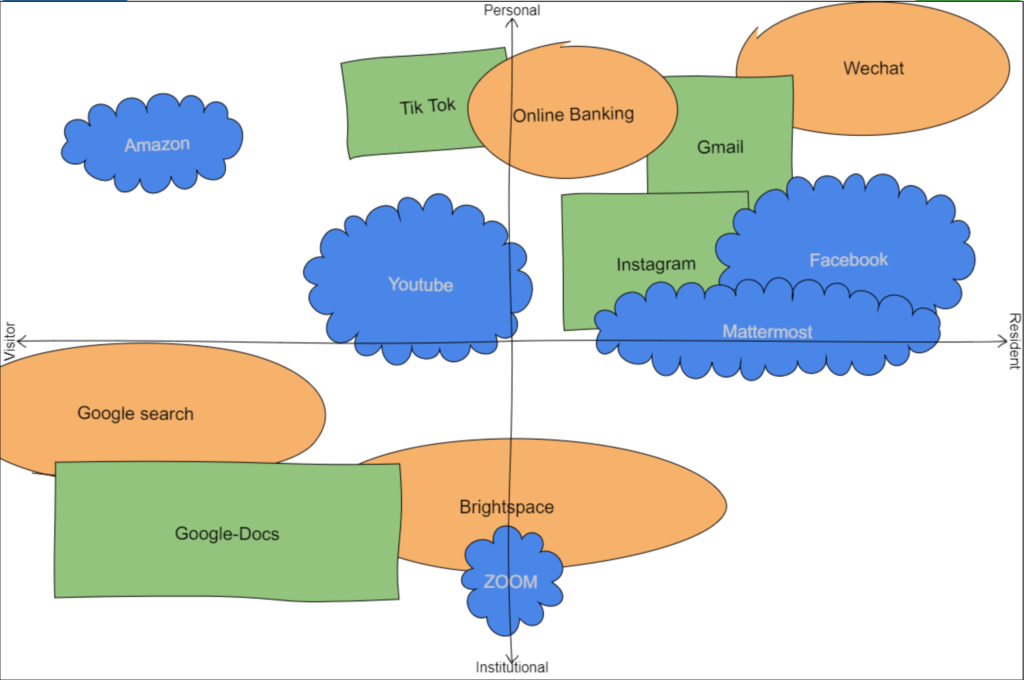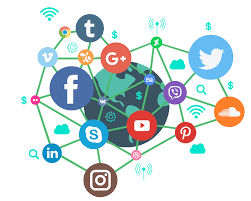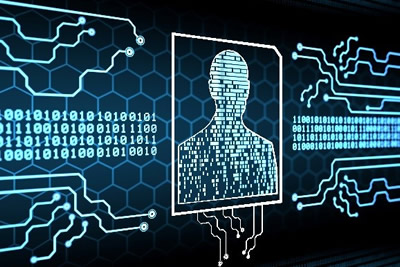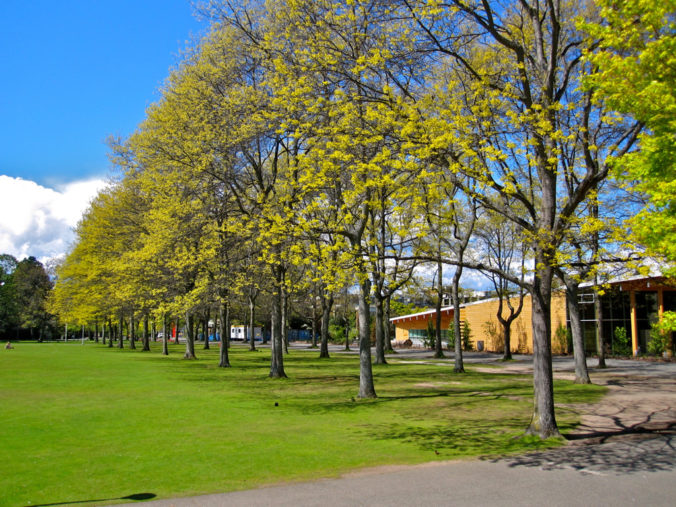EDCI 338 – Social Media and Personalized Learning
Final Assignment
Group 8
University of Victoria
Table of Contents
Introduction
Personal learning networks (PLNs) are a group of people that discuss topics and share new ideas. Since the digital age, PLNs have expanded and can incorporate online interactions from around the globe. PLNs have become extremely valuable when used through social media platforms, which will be discussed throughout this paper. Another notable aspect of these learning networks is that individuals decide who is in their PLN. These connections are able to provide useful ideas and information that then can be beneficial towards personal learning objectives. For this paper, many different social media platforms will be discussed, however emphasis will be placed on Facebook.
PLN & Social Media Platforms
Personal learning networks interact with social media platforms in a multitude of ways. Building a PLN is an effective method in growing and maintaining relationships, professionally or personally. With that said, social media platforms provide us the platform to create these connections. Platforms like Facebook have functionality that allows users to make connections, engage in dialogue, and share new ideas. Without social media platforms providing the ability to find new people and create a community, it would be extremely difficult to expand our PLN. Also, it’s important to note that many social media platforms allow users to select their interests which further helps in connecting with others.
Social media platforms provide an environment that advocates for sharing of ideas, materials, and resources. For example, Facebook empowers people to create groups and participate in sharing ideas, as well as have respectful discourse. Additionally, the platform has become much more than just connecting with friends, it bridges people together from anywhere in the world. Social media is the medium in which we represent ourselves in the digital world. In the digital age, connecting with people to grow our PLNs is seamless.
How a PLN Should Be Created, Managed, and Engaged
When users create their own PLN on Facebook, the first thing is to know your interests and the direction you want to develop your PLN. For example, if you like to read, then you can do a relevant search from Facebook. When you enter into your learning community, you can develop your own personal learning network in the community and find friends. Even share your reading experience and other content related to your reading community with others. When you see someone in your community post a question and you know the answer, you can connect and interact with that person. Likewise, you can post your own reading experiences in your social accounts and share them in your reading community. The most important aspect of creating, managing and engaging in our PLN is communication. There is a sense of empathy between users in their own PLN community. This feeling is what allows you to progress and make your PLN more enriched. This is the main reason as to why our PLN is important.
Key Characteristics of Social Media Platforms
A notable benefit of Facebook is the connectivity it provides. Facebook has been able to set a precedent of being accessible anywhere at any time. Through movements in analytics, free internet basics, high-altitude connectivity, and more, Facebook is working to bring more of the world online (Bayern, 2018). The platform has many useful characteristics including a news feed, timeline, friend connections, messenger, and many more. All are created to further enhance the connection of their users as well as increase dialogue on thoughts and opinions surrounding any type of topic. Facebook is also a great platform to express your thoughts and receive useful feedback from a wide range of individuals.
It’s important to highlight Facebook’s history of privacy issues. It is no surprise that Facebook has had a complicated history of data exploitation and unlawfully sharing data with third parties. Soon after the creation of Facebook, the social media platform has been under public eye and extreme scrutiny over the handling of user information. Another negative characteristic to mention would be censorship policies that have been enforced. Facebook has been found to suppress free speech and public communication that doesn’t fit the company’s ideology. This can be very dangerous as it silences the voices of individuals that have a right to free speech. If Facebook gives itself broader censorship powers, it will inevitably take down important speech and silence already marginalized voices (Eidelman, 2018).
Features of Existing Media Technologies That Make Them Effective For Personal Learning
Facebook, being the largest social media network in the world, has a very large number of users. This also means that there are people with all kinds of different interests on Facebook. I think the most effective media technology feature in Facebook for individual learning is the ability for users to communicate and connect anywhere, anytime. Users create online learning communities in Facebook, “a group becomes a learning community when the members share a common vision that learning is the primary purpose for their association and the ultimate value to preserve in their workplace” (Jennifer, 2018). When users are in the same learning environment, they can communicate with each other to share and learn from each other. Although Facebook does not have a clear educational meaning like zoom or other digital media, it allows students to stay connected among various online learning communities. One outstanding feature of Facebook is its immediacy. When a user has a question, he can immediately send a query in the professional community and someone will reply soon. Facebook can be used not only as a social platform, but also as a platform for learning and communication. Especially in the period of online classes, facebook’s online learning community makes our personal learning more effective.
Ways That Technology Allows You to Enhance/Develop Your Digital Identity/Reputation
Since inception, Facebook has grown to be a leader in providing digital identity globally. Right now, 1.73 billion daily users access Facebook’s platform, an 11% increase year-over-year (Dean, 2012). Throughout the years, the platform has been able to create new ways of developing digital identity for its users. It’s important to note that other platforms deliver similar functionality for its users, however, Facebook takes it a step further. Digital Identity is central to Facebook’s functionality, because of that, the platform acquired Confirm, a identity verification startup. Facebook upping its identity game will have numerous benefits for its users. One in which users still get those aforementioned benefits but at the same time, maintain control and ownership over their digital identity, and in turn, their own destiny (GlobaliD, 2018). Facebook has created a user-friendly platform that is quite easy to connect with individuals in the online space. Every photo, post, comment, or share on Facebook is stored and reflects your digital identity from the moment of creating an account. Facebook is enabling the world to develop digital identity at an alarming rate. The chart below illustrates the number of monthly active users worldwide, an astonishing 2.7 Billion.

Figure 1. Image Taken From https://www.statista.com/chart/10047/facebooks-monthly-active-users/
Social Considerations That Should Be Accounted for
I think the social consideration we should take into account in Facebook is digital reputation. In our course, we have looked at whether social media can affect our future careers. When an employer searches your name on the internet, anything related to you will come up and change the employer’s perception of you. Likewise, when you post false information on Facebook it can also cause panic in some people because of what you say. Information travels very quickly on the internet and it is easy for small things to be magnified. This can have a negative impact on society if false content is seen by underage or elderly people. For example, if you have posted false information about Covid-19 on Facebook and your message misleads some users, and your employer later sees it, this could determine your acceptance. Because your digital credibility is bad, no employer will hire an employee who makes things up on social media. So I think the digital credibility of social media has a pivotal impact on social considerations.
Different Ways Technology Tracks and Uses Your Data
Tracking people through technology begins when people use apps to purchase items or drive to different locations. It obtains the information from these apps to obtain user’s credit card details and location details (Walster, 2017). They can even obtain information such as the users’ names, contact, photos, personal settings, and other activities within the app. Companies, later on, utilize this information for advertising purposes and to innovate for social good. They can use the information about the customers’ location, what they like, their preferences, and other information to develop personalized ads to market to other users.
Advertisers can collect all the credential information of the users through the digital footprints used by other companies. They then use cookies and other tracking elements to track people and get them into purchasing their products. For instance, suppose a person uses different devices in a similar location and accesses the same websites or social media accounts. The gadgets can be tied down to the innovative profile (Walster, 2017). Other companies can then utilize this information to advertise to other customers who may like the same things as the one for the user. Ultimately, data collectors establish large databases with customer profiles to use for future references. They can continue using this information even without the knowledge or consent of their obtained information.
Strengths and Weaknesses of the Privacy, Security, and Acceptable Use Policies for Social Media Platforms
Privacy
Data privacy has several strengths. First, it protects and secures private information. Second, it safeguards valuable information like financial statements and business transactions (Walster, 2017). Third, it improves the quality of stored information and that used during transactions. Fourth, it decreases the risk of financial losses. Finally, it prevents companies from data theft and information breaches. On the weaknesses, poor data privacy options lead to a lack of customer confidence in the company. Second, it is expensive and difficult to maintain. Third, it needs organizational and technical measures to protect unlawful data processing within organizations.
Strengths and Weaknesses of Security
Information security leads to adequate protection of computer systems against malware, firewalls, and viruses. Second, it mandates employees to set sophisticated passwords difficult to crack (Bertot, 2012). Third, it protects the users from copyrights, patents, and trademarks under information security law. Contrarily, security has risks that could be detrimental to users and organizations. First, it is expensive to implement. Second, a security breach could cost devastating damages to the users. Third, it suffers from a lax attitude to protect and update software oftentimes.
Strengths and Weaknesses of Acceptable Practice
Some strengths of AUPs include holding users accountable, using rules for all users, and easier development in different situations. However, AUPs are not realistic on the weaknesses, especially if the AUP is not carefully established. Finally, a hacker could potentially determine a loophole to an information breach.
Examples of Individuals Who Have Used a PLN to Become Leaders in a Field of Interest, and Their Presence in the Platform
PLN can use many social software as the carrier, such as Facebook, Instagram, TikTok. One of my favorite bloggers on TikTok is Little A. In fact, she has two digital identities, as she has two accounts on TikTok with a total of four million followers. Her two digital identities have very different styles. One of the digital identities is named Little A with no place to put. She often uses this digital identity to share some interesting things in life, and it is also her first digital identity. Another digital identity is called Study Finance with Little A. She uses the digital identity to share her investing experiences, recommend funds to her followers and communicate with others about money management. With her second account, Xiao A became the leader of investment in TikTok and gained A large number of fans.
Building your reputation and influence on social media platforms is not an easy task. TikTok is a popular social media platform with a large number of active users. But that doesn’t mean it’s easy to build a reputation on TikTok. In the beginning, Little A had only one digital identity: Little A with nowhere to put it. She has gained some followers by her appearance, but this can not prove that she has established influence, she was not satisfied with the current situation. After that, she began to experiment with new styles. Eventually, she established her second digital identity: Study Finance with Little A. I think it’s a very successful digital identity. Little A resonates with others by sharing his investment experience. At the same time, they will also use humorous language to talk about investment knowledge and share their profit and loss status. This makes people think that following her can not only learn investment knowledge, but also be very interesting. Finally, Little A gained A large number of followers with her second digital identity and built her own reputation and influence. In fact, Little A has A digital identity with media literacy, and she always puts the interest of the content in the first place. But she didn’t lose much factual information because the fun of her videos came from her humor. I think this is the main reason for the success of her digital identity.
Measuring the Success of Your PLN
The success of your Personal Learning Network can be determined by many factors. Provided below are screenshots of Omar’s professional PLN and how he measures success. For this section, it will primarily be focused on Omar’s professional network within Twitter & Linkedin.

Figure 2. Omar’s Linkedin

Figure 3. Omar’s Twitter Followers
The first measure of success is having a PLN that incorporates people that have a wide range of perspectives, ideas, and experiences. As you can see above, Omar’s PLN heavily focuses on the Health Informatics community. Omar currently has 75+ connections on Linkedin, and follows governing bodies on Twitter in order to stay engaged on the current landscape of Health Informatics in Canada. Throughout school and work, Omar has been able to create lifelong relationships in which he can provide his ideas, but his connections can do the same. Another important measure of success is actively being engaged within your community and providing your perspective. It’s not enough to simply retweet or like a post, it’s about providing insight in hopes of sparking additional thoughts or even dialogue among individuals in the community. Fundamentally, a PLN should empower individuals to discuss and share new ideas, but that doesn’t start without personal engagement. Similarly, without people who contribute, a PLN would stagnate quickly. So, when developing a social networking presence don’t lurk, actively participate (Green, 2020). Another important aspect that creates a successful PLN is the devotion to learning. Throughout EDCI 338, PLN’s have been the main focal point in not only being a method of communicating but also a learning network. A successful PLN can be described as an individual taking ideas and expanding on their existing knowledge. It’s important to understand that PLN’s are not solely for interaction but more so the repercussions of those interactions, and how we can further expand our comprehension of a subject. With that said, many platforms allow anyone to create a PLN, but it’s the actions of the individual that make a PLN meaningful.
Conclusion
Now being at the end of the course, it’s quite evident that PLNs play such an important role in our digital identity. Being able to connect with individuals and share ideas is very valuable. Especially during the pandemic, we found that these connections not only can be learning experiences, but also a simple way of creating connections during hard times. For that reason, we find PLNs extremely versatile in what they have to offer. Additionally, one point we found very interesting is that every personal learning network is different. The personalization of PLNs allow people to differentiate themselves and make their content unique. We found this point to be central in what creates an effective PLN. Lastly, we found that without engagement, a PLN will never be utilized to its full potential. Engagement and collaboration is key when deciding to create or maintain a personal learning network.
References
Bayern, M. (2018). How Facebook Connectivity wants to bring more people and businesses online. https://www.techrepublic.com/index.php/article/how-facebook-connectivity-wants-to-bring-more-people-and-businesses-online/
Bertot, J. C., Jaeger, P. T., & Hansen, D. (2012). The impact of policies on government social media usage: Issues, challenges, and recommendations. Government information quarterly, 29(1), 30-40.
Dean, B. (2012). Facebook Demographic Statistics: How Many People Use Facebook in 2021? https://backlinko.com/facebook-users
Eidelman, V. (2018). Facebook Shouldn’t Censor Offensive Speech. https://www.aclu.org/blog/free-speech/internet-speech/facebook-shouldnt-censor-offensive-speech
GlobaliD. (2018). Facebook’s bet on digital identity and why it matters. https://medium.com/@myglobal_id/facebooks-bet-on-digital-identity-and-why-it-matters-10cadbbfdd57
Green, C. (2020). Personal Learning Networks: Defining and Building a PLN. https://open.library.okstate.edu/learninginthedigitalage/chapter/personal-learning-networks_defining-and-building-a-pln/
Jennifer C, Mitchell P, Sue G, Peter F & Vicente R (2018) Student-initiated Facebook sites: nurturing personal learning environments or a place for the disenfranchised?, Technology, Pedagogy and Education, 27:4, 459-472, DOI: 10.1080/1475939X.2018.1507924
Walster, D. (2017). Information policy and social media: Accept or decline. TechTrends, 61(3), 301-307.





Recent Comments